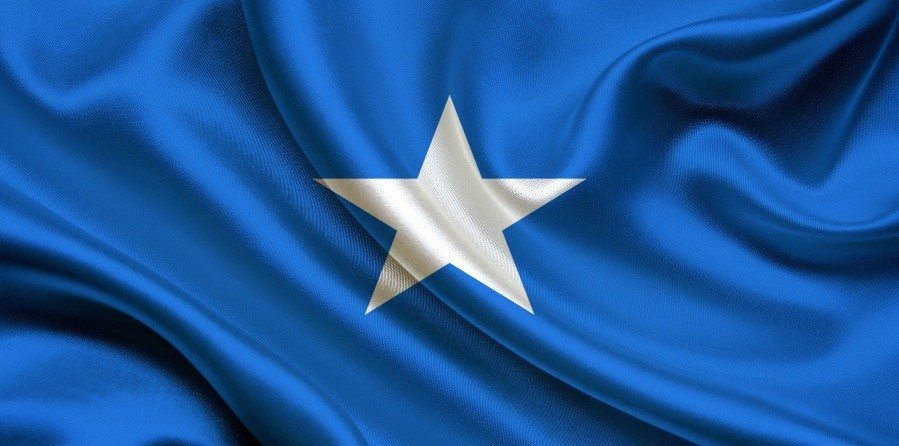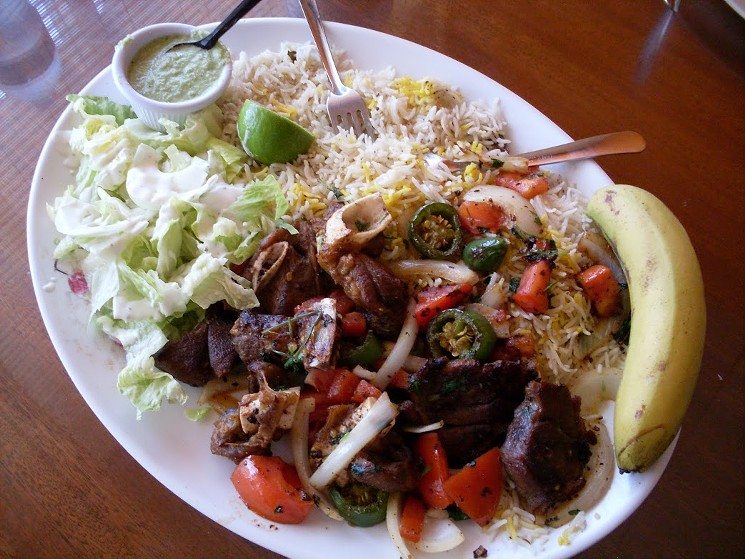Somalia, the horn of Africa is an Islamic country that borders the Indian Ocean to the East, Kenya to the West and Ethiopia and the Red Sea to the North. The longest history of the Somali people dates back to 5000 years ago in form of paintings seen on Laas Gall Complex.
In antiquity, Somali and its people played an important part in international trade being located juts hundreds of kilometres into the Arabian Sea, the Indian Ocean and lying along the southern side of the Gulf of Aden. Somalis have however been misunderstood mainly because they are extensively spread over the neighbouring countries and the entire Horn of Africa. Here are all the facts about Somali People, Language and Culture.
Somali People
Somali people (Soomaaliyeed) are mainly Muslims of Cushitic Afro-Asiatic Family. They are mainly of Arabic group and occupy the Horn of Africa countries. It is estimated there are between 15-17 million Somalis living in the Horn of Africa. About 8.7 million live in Somalia, 4.5 million in Ethiopia, 1 million in Kenya and less than a million in Djibouti. A significant number also lives in the Middle East and abroad.
Read: Interesting Facts About Swahili People, Language and Culture
The Somali people share a lot in common such as language and faith. Somalis are reported to have started appearing in the region at around 1200 AD and started moving southwards due to expansion. They were greatly influenced by the Arabic traders moving along the coast of the Horn of Africa and East Africa.
Somalis are categorized into ethnic groups which in turn play important parts in politics and culture. However, the differences are not easily realizable or explicit as it is in neighbouring Kenya or even Rwanda. The main clans in Somalia constitute 62% of the total population while other smaller groupings form the remaining 38%.
Don’t Miss: Ethiopian food, Traditional wedding vows, Trivia questions and answers, Happy birthday nephew,
The clan structure that has always determined the political orientation of the country categorizes the groups into two. The main clans include Darod, Dir, Hawiye, Isaaq and Rahanweyn. The minor tribes include Gabooyo, Muse, Yibir, Reeroqw-Xassan and Madhiban.
Somali Culture
The Somali culture is a rich amalgamation of traditions that have developed over time independently. The culture has also been influenced by civilization in Egypt, India, the Arabian Peninsula and even Asia. The main components of culture strongly reflected in their way of life. The Somalis are warriors and mainly involved in the nomadic lifestyle. They keep camels, donkeys, cows and goats while moving from one area to another looking for pastures. Because of this nomadic lifestyle, Somalis do not have permanent structures/houses. They put up temporary shelters as they move from one area to another.
Some Somali clans have a history of pottery, wood carvings and architecture. This is evident in many festivals, martial arts, dressings and sports. Many Somalis in emerging Somalia are seemingly modern and strongly influenced by the western lifestyles especially evident in neighbouring Kenya.
Read Also: Oromo People, Language and Culture
Music is an important part of the Somali culture. Many Somalis music are pentatonic which makes their music to easily be mistaken with sounds from neighbouring countries such as Eritrea, Arabia and Ethiopia. The local musicians have however realized their rich uniqueness and are now selling and creating awareness about the Somalis globally with bands and artists such as Waayaha Cusub and Mooige Mohammed. Music from these artists and bands talk mainly about the Somali people and their way of life.
Somali Language
Somalis speak the Somali which is one of the Afro-Asiatic languages. Somali language is extensive and spoken by all countries in the horn of Africa and globally distributed communities. Though the language is mainly considered as Somali, it has three divisions which have minor differences. The first division is standard Somali which is spoken by Northern-Central Somalis. The second division is Northern Somali spoken by Somalis residing in the upper end of the country and those living in Ethiopia and North Eastern parts of Kenya. The last division is coastal Somali spoken by Somalis of Mogadishu, Adale and Benadir and other coastal regions of the country. The coastal Somali language consists of additional phonemes that are absent in standard Somali.
The Somali language is made of Somali Alphabets that became official in Somalia after a formal introduction by former President Siad Barre. It utilizes most of English Latin Alphabets with exception of p, v and z. Other scripts used in the Somali language include Wadaad’s scripts, Arabic scripts, Kaddare scripts, Borana and Osmanya scripts. It’s important to point the emerging influences of Swahili language mainly from Kenya and East African Coast. Somali people’s language and culture have strongly been influenced by their immediate neighbours and the future is still unfolding.
See Also: 100 Most Influential Africans
Somali Women
Somali women make up a key part of the nation’s society and they are usually seen adorn in the Guntiino, a long stretch of cloth tied over the shoulder and draped around the waist. For grand or formal occasions such as weddings or religious celebrations like Eid, women wear the Dirac, a long, light, diaphanous voile dress, a long, light, diaphanous voile dress made of cotton, polyester or saree fabric.
In Somalia, married women tend to sport head-scarves referred to as Shash, and also often cover their upper body with a shawl known as Garbasaar. However, the Unmarried or young women, do not always cover their heads.
Notable women in the country include Chairperson of the Barnet Muslim Women’s Network Hanan Ibrahim, former Federal Minister of Social Development Maryam Qaasim, former Federal Foreign Minister Fowsiyo Yussuf Haji Aadan, former Foreign Minister of the Somaliland region Edna Adan Ismail, and parliamentary consultant Hodan Ahmed.
Somali Food/Delicacies
The Somalian cuisine has various influences from countries like Italy, Turkey, India, Arabia, and Ethiopia. It is also enriched with Somali’s regional dishes – a fine example of local people’s culinary expertise and they include breakfast, lunch, dinner plus snacks.
Maraq Digaag: Is a delicious spicy soup preparation with a domineering taste of chicken, tomatoes, potatoes, and carrots, usually eaten with bread.
Malawah: The Malawah is a staple meal in Somali usually served as a breakfast food. It pretty much prepared like pancakes and can be eaten with a side dish such as tomato sauce.
Canjeero: Is also a staple food among Somalians. It’s a fermented pan bread, with a soft texture and can be eaten with beef stew to balance the taste.
Iskudheh Karis and Surbiyaan Hilib Adhi are rice dishes prepared in different ways using vegetables and meat. Rice is usually served with meat and/or a banana on the side.
Other Somali delicacies include Muufo, Suugo Suqaar (Somali pasta), Cambuulo Iyo Maraq, Kaluun Iyo Bariis, Xalwo(a sweet treat), Nafaqo and Sambusa (snacks), Cambuulo Iyo Maraq, Kac Kac etc.
See Also: 10 Popular Swahili Music Videos You Should Listen To
Somali Music
The musical heritage of Somali is centred on the country’s traditional folklore and songs are usually the product of collaboration between lyricists (midho), songwriters (laxan), and singers (Codka or “voice”). Despite zero support by a non-existent government, Somali music has managed to flourish fantastically. The country boast of talented new singers such as Aar Maanta and Farhia Fiska plus legends like Nimco Yasin and Hassan Aden Samatar.
However, many Somali musicians do not take singing as a full-time career, majorly because there isn’t enough financial reward and media attention. But all that seems to be changing with the fast-growing interest in the entertainment as a source of economic growth.
Somali Flag
Somali flag was personally designed by the Somali scholar Mohammed Awale Liban and officially adopted on October 12, 1954, during the transitional trusteeship period of the nation’s history.
The nation’s flag has two colours, the sky blue background and white “Star of Unity” which symbolises the Somali race found in Djibouti, Ethiopia, Kenya and the former associated British and Italian colonies.
See Also: Child Soldiers in Uganda, Africa – History, Facts and Statistics
Interesting Facts about Somali
Among the many interesting facts about Somali, the semiarid land in the Horn of Africa experiences a very hot climate due to its close proximity to the equator. The average temperature around the year is 20 to 40⁰C, though some parts in the north experience temperatures above 45⁰C. The Somali people have however adapted to this otherwise harsh environmental conditions and thrive well in their land.
Somalia has two chief rivers, the Shebelle and the Juba, otherwise, the country is generally arid and barren. However, agricultural products include cattle, goats, sheep, corn, sorghum, coconuts, sugarcane, mangoes, rice, sesame seeds and beans. Also, the country export livestock, hides, bananas, fish and charcoal – only about 2% of Somalia’s land is arable.
The origin of the Somali people is not known. Nevertheless, historians opine that the Somali tribe originated in the south European highlands but gradually migrated to populate the Horn of Africa at around B.C. 100.
The country’s culture is largely dominated by Islamic law and it is the only Islamic country in the world that boasts of a 100% concentration of Sunni Muslims.
Despite not having a central form of government, Somali has one of the most advanced telecommunications systems in Africa as well as the only African nation that can boast of the cheapest cellular tariff rates with some companies charging less than a cent per minute.
Colonized by both Britain and France, Somali comprises of 27 regions and has the largest population of refugees in the world. Somali people are usually tall and slender, their men often wear a flowing plaid “ma’awiis” or kilt or pants.

